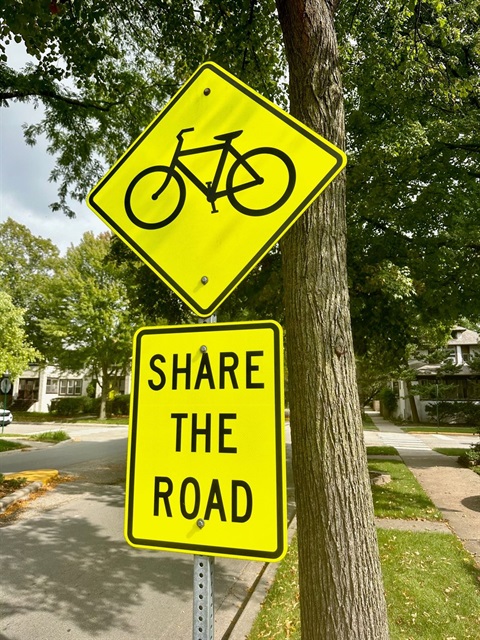Traffic Safety

The Village is committed to the goal of consistently having zero deaths or serious injuries on its streets by 2035.
Oak Park's Vision Zero Action Plan details the approach for how the community will get there together and is guided by data and informed by the lived experiences of people throughout Oak Park.
Traffic Calming
With 100 miles of streets in Oak Park, the Village Board relies on residents to help identify traffic issues on neighborhood streets. When issues are raised by residents, the Village uses an established review process that includes a resident-initiated petition, traffic data collection and analysis, public hearings and final action by the Village Board. Typical issues reviewed through this process include remedies for excessive vehicle crashes, traffic speeds and volumes, and pedestrian and bicyclist safety.
To effectively respond to resident-initiated petitions, the Village has developed a list of accepted options and analytical tools to help address and remedy common traffic problems on residential streets. In addition to the petition, this Traffic Calming Toolbox includes a scoring table that allows for consistent and objective evaluation of possible causes and a matrix of available measures that can be used to address most traffic issues.
Traffic safety is overseen by the Public Works Department's Engineering Division.
Traffic Calming Petition Status Update(PDF, 75KB)
How the process works
-
A resident submits a petition for implementation of traffic calming measure that may remedy a perceived neighborhood traffic problem. The petition must be signed by residents representing at least 51 percent of the properties along the street frontage where the traffic calming measures are being requested.
Download a petition and list of petition requirements(PDF, 117KB)
-
Village staff reviews the petition to verify that the required number of signatures has been acquired. This review can take up to three weeks. Petitions with an insufficient number of signatures are returned to the petitioner, who can continue to seek additional signatures and re-submit the petition.
-
Traffic data is collected and analyzed, a process that can take up to six weeks to complete. Traffic data collection may be delayed for a variety of reasons specific to the site, such as schools not in session or road construction on adjacent streets.
-
Valid petitions and related data are scheduled for review by the Transportation Commission, a volunteer citizen body that advises the Village Board on matters related to parking and transportation. The Commission meets monthly in public meetings. Residents are invited and encouraged to attend Transportation Commission meetings and present testimony.
-
During the public meetings, the Transportation Commission reviews petitions and traffic data, listens to public testimony, discusses issues and makes recommendations to the Village Board for consideration of final action. Petitioners are urged to monitor the Village Board calendar to determine when final action on a particular item is scheduled.
-
The Village Board's final decision is implemented by Village staff.
About the Traffic Calming Toolbox
Staff from the Village's Engineering Division uses the scoring table in the Traffic Calming Toolbox to help determine if a petition should advance to the Transportation Commission for review. The toolbox matrix then helps focus the public review process.
Scoring Table(PDF, 114KB)
A numerical score is calculated for six measures that are typical reasons for a petition to be submitted. The maximum possible score is 100 points. A minimum score of 25 points is required to bring a petition before the Transportation Commission. A valid petition - one with the signatures from the owners of a majority of properties within the petition area - automatically earns 10 points. Three points also are assigned automatically if the issue is on a street that is not a proposed bicycle route or boulevard. This means that 13 of the needed 25 points are earned by default.
Matrix(PDF, 87KB)
The Transportation Commission has 32 traffic calming measures available to help address issues raised in a petition. Measures are grouped within a matrix of least restrictive and least costly to most restrictive and most costly. Traffic engineering best practice is to remedy a traffic problem by implementing the least restrictive measure that is appropriate for a given situation. Only if less restrictive measures prove ineffective, should more restrictive measures be considered. The matrix also includes a column indicating who would pay for implementation of any particular traffic-calming measure - the Village or the petitioning residents. If residents are to pay, they may agree to form a Special Service Area to allow a property tax surcharge to be collected over a set period such as five or 10 years. If the Village is to pay, implementation timelines will be determined by the availability of funds and construction resources.
Help with the petition process
Village staff is available to provide residents with assistance through the petition process. For assistance, call 708.358.5700 from 8:30 a.m. to 5 p.m., weekdays and ask for the Engineering Division.

